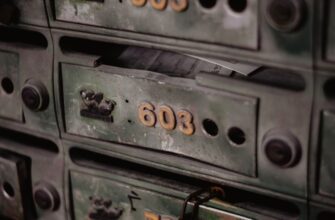Why Backing Up Your Crypto Wallet is Non-Negotiable
Imagine losing lifetime savings in seconds because your phone broke or a hacker wiped your device. Unlike traditional banks, cryptocurrency transactions are irreversible, and wallets aren’t FDIC-insured. Your seed phrase is the only lifeline to recover funds. This tutorial eliminates guesswork with battle-tested methods to backup crypto wallets securely, ensuring you never become a tragic statistic in the blockchain graveyard.
Types of Crypto Wallet Backups Explained
Not all backups are equal. Choose wisely based on your security needs:
- Seed Phrase (Recovery Phrase): 12-24 random words generated during wallet setup. This is the universal key to restore access.
- Hardware Device Clone: Duplicating hardware wallets like Ledger or Trezor (requires purchasing multiple devices).
- Encrypted Digital Files: Password-protected documents stored offline (e.g., USB drives). High risk if compromised.
- Metal Plates: Fire/water-resistant engraved plates storing seed phrases. Ideal for long-term preservation.
Step-by-Step Guide to Backing Up Your Crypto Wallet Safely
Follow this foolproof process for any software or hardware wallet:
- Generate Your Seed Phrase Securely: During wallet setup, write down words manually on paper. Never screenshot or type them digitally at this stage.
- Verify Phrase Accuracy: Most wallets require re-entering words to confirm. Triple-check spelling and order.
- Create Physical Copies: Make 2-3 identical handwritten copies using indelible ink. Store in separate locations (e.g., home safe, bank vault).
- Upgrade to Indestructible Storage: Transfer phrases to stainless steel plates (e.g., Cryptosteel) using letter punches. Avoid paper degradation.
- Encrypt Digital Backups (Optional): If using digital storage, encrypt files with VeraCrypt before saving to air-gapped devices. Never store in cloud services.
- Test Your Backup: Restore wallet access using one backup copy on a clean device. Reset wallet afterward.
Best Practices for Storing Your Backup
- Geographical Separation: Keep copies in different physical locations to survive disasters.
- Limit Access: Share only with ultra-trusted individuals using Shamir’s Secret Sharing if necessary.
- Zero Digital Traces: Never email, message, or cloud-store seed phrases. Keyloggers are rampant.
- Regular Audits: Check backup integrity every 6 months and update if storage degrades.
What to Do If You Lose Access to Your Wallet
If your device fails or gets stolen:
- Retrieve your physical seed phrase backup.
- Install the original wallet software on a malware-free device.
- Select “Restore Wallet” and enter phrases exactly in order.
- Reset all backups afterward as a security precaution.
Warning: Phishing sites mimic wallet recovery pages. Only use official apps from verified sources.
FAQ: Backup Crypto Wallet Safely Tutorial
Q: Can I store my seed phrase in a password manager?
A: Absolutely not. Password managers are online targets. Physical offline storage is mandatory.
Q: How often should I update my crypto wallet backup?
A: Only when creating new wallets. Existing seed phrases don’t expire—just ensure storage remains intact.
Q: Is it safe to split my seed phrase across multiple locations?
A: Yes, but use caution. Divide via Shamir’s Secret Sharing (supported by Trezor) rather than simple splitting.
Q: What destroys most crypto backups?
A: Human error: water-damaged paper, lost notes, or digital exposure. Metal backups solve 90% of these issues.
Mastering wallet backups transforms you from crypto user to crypto survivor. Treat your seed phrase like the crown jewels—because in the digital age, it literally is. Start securing yours today.








